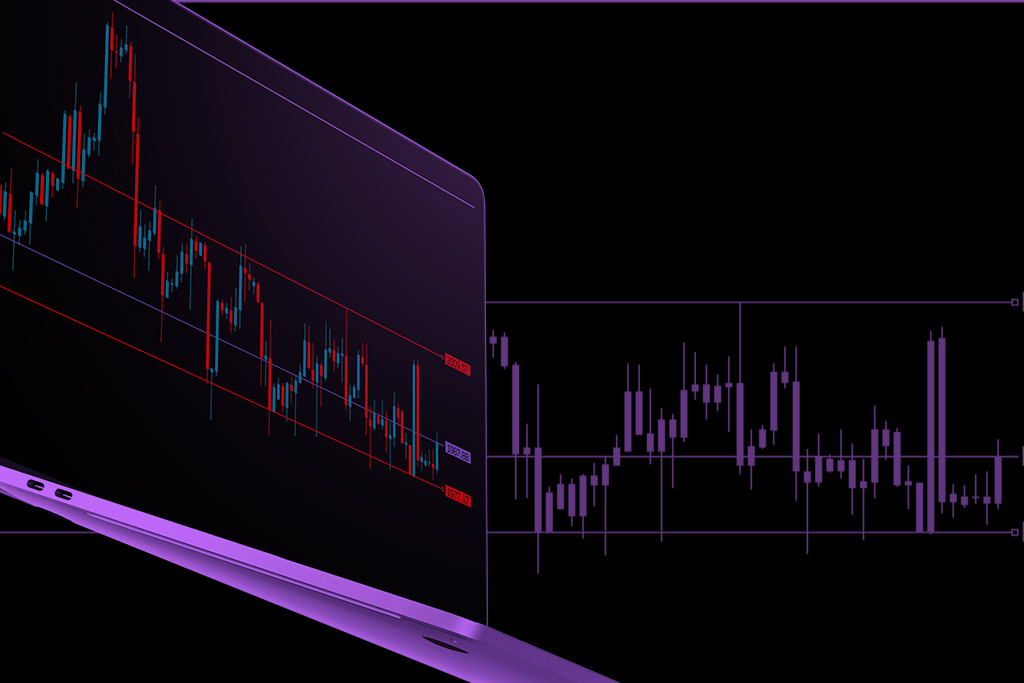Range trading approach in FX trading

What is Range Trading?
Range trading is a trading strategy that involves buying at the bottom of a range and selling at the top of a range. The goal is to identify areas of support and resistance within a defined price range and profit from the price fluctuations between these levels.
Support levels are price levels where buyers are likely to enter the market, while resistance levels are areas where sellers are likely to enter the market. A range is formed when the market is trading within a specific price range, bouncing between these support and resistance levels.
Range trading is effective in these market conditions because it allows traders to capitalize on the predictable price swings that occur within the range.
Advantages of Range Trading
There are several advantages to range trading, including:
- Predictable Price Swings – The predictability of price swings within a range makes it easier for traders to anticipate potential trades and manage risk.
- Easy to Identify Support and Resistance Levels – Support and resistance levels can be easily identified using technical analysis tools such as trend lines, moving averages, and chart patterns.
- Lower Risk – Range trading can involve lower risk because traders can set tight stop-loss orders at the opposite end of the range.
- No Need for Fundamental Analysis – Range trading is a technical analysis-based strategy, which means traders do not need to rely on fundamental analysis to make trading decisions.
Implementing Range Trading in Forex
To implement range trading in forex, traders need to follow a few basic steps:
Step 1: Identify the Range
The first step is to identify the range in which the currency pair is trading. This can be done by using technical analysis tools to draw support and resistance levels on the chart.
Step 2: Wait for a Breakout
Once the range is identified, traders need to wait for a breakout to occur. A breakout happens when the price breaks through the support or resistance level, indicating a potential change in trend.
Step 3: Place Orders
Traders can place a buy order near the support level if the price breaks out of the range to the upside. Alternatively, a sell order can be placed near the resistance level if the price breaks out of the range to the downside. Stop-loss orders should be placed at the opposite end of the range to minimize potential losses.
Step 4: Monitor the Trade
Once the orders are placed, traders need to monitor the trade and adjust their positions accordingly. If the price continues to move in the desired direction, traders can adjust their stop-loss orders and take-profit targets to maximize profits.
There are several MetaTrader tools that traders can use to implement range trading strategies, including:
- Trend lines: Trend lines are one of the most popular tools in technical analysis, and they are particularly useful for range trading. Traders can use trend lines to identify areas of support and resistance and to determine the direction of the trend within the range.
- Oscillators: Oscillators such as the Relative Strength Index (RSI) and the Stochastic Oscillator can be used to identify overbought and oversold conditions within the range. Traders can use these indicators to time their entries and exits and to identify potential trend reversals.
- Moving averages: Moving averages can be used to identify the direction of the trend within the range and to confirm support and resistance levels. Traders can use different periods of moving averages to identify short-term and long-term trends within the range.
- Fibonacci retracements: Fibonacci retracements can be used to identify potential support and resistance levels within the range. Traders can use these levels to identify potential entry and exit points and to set stop-loss and take-profit orders.
- Volatility indicators: Volatility indicators such as the Average True Range (ATR) can be used to identify the potential size of price swings within the range. Traders can use this information to set appropriate stop-loss and take-profit levels and to manage their risk.
However, trend lines, oscillators, moving averages, Fibonacci retracements, and volatility indicators are all popular tools that traders can use to identify support and resistance levels, time their entries and exits, and manage their risk.
Range trading is a simple and effective forex trading strategy that can be applied to any financial market with a defined range. Traders can use technical analysis tools to identify support and resistance levels, wait for a breakout, and place orders to profit from the price swings within the range.
The information provided here has been prepared by Eightcap’s team of analysts. All expressions of opinion are subject to change without notice. Any opinions made may be personal to the author and do not reflect the opinions of Eightcap.In addition to the disclaimer on our website, the material on this page does not contain a record of our trading prices, or represent an offer or solicitation for a transaction in any financial instrument. Eightcap accepts no responsibility for any use that may be made of these comments and for any consequences that result. No representation or warranty is given as to the accuracy or completeness of this information. Consequently, any person acting on it does so entirely at their own risk. Any research provided does not have regard to the specific investment objectives, financial situation and needs of any specific person who may receive it. It has not been prepared in accordance with legal requirements designed to promote the independence of investment research and as such is considered to be a marketing communication. Please note that past performance is not a guarantee or prediction of future performance. This communication must not be reproduced or further distributed without prior permission.


